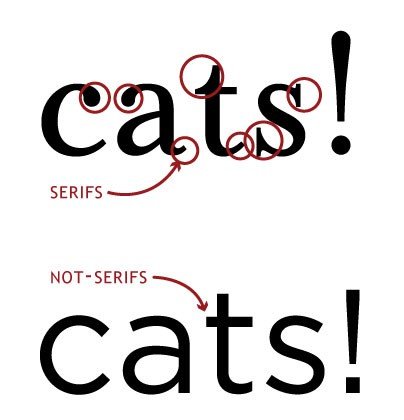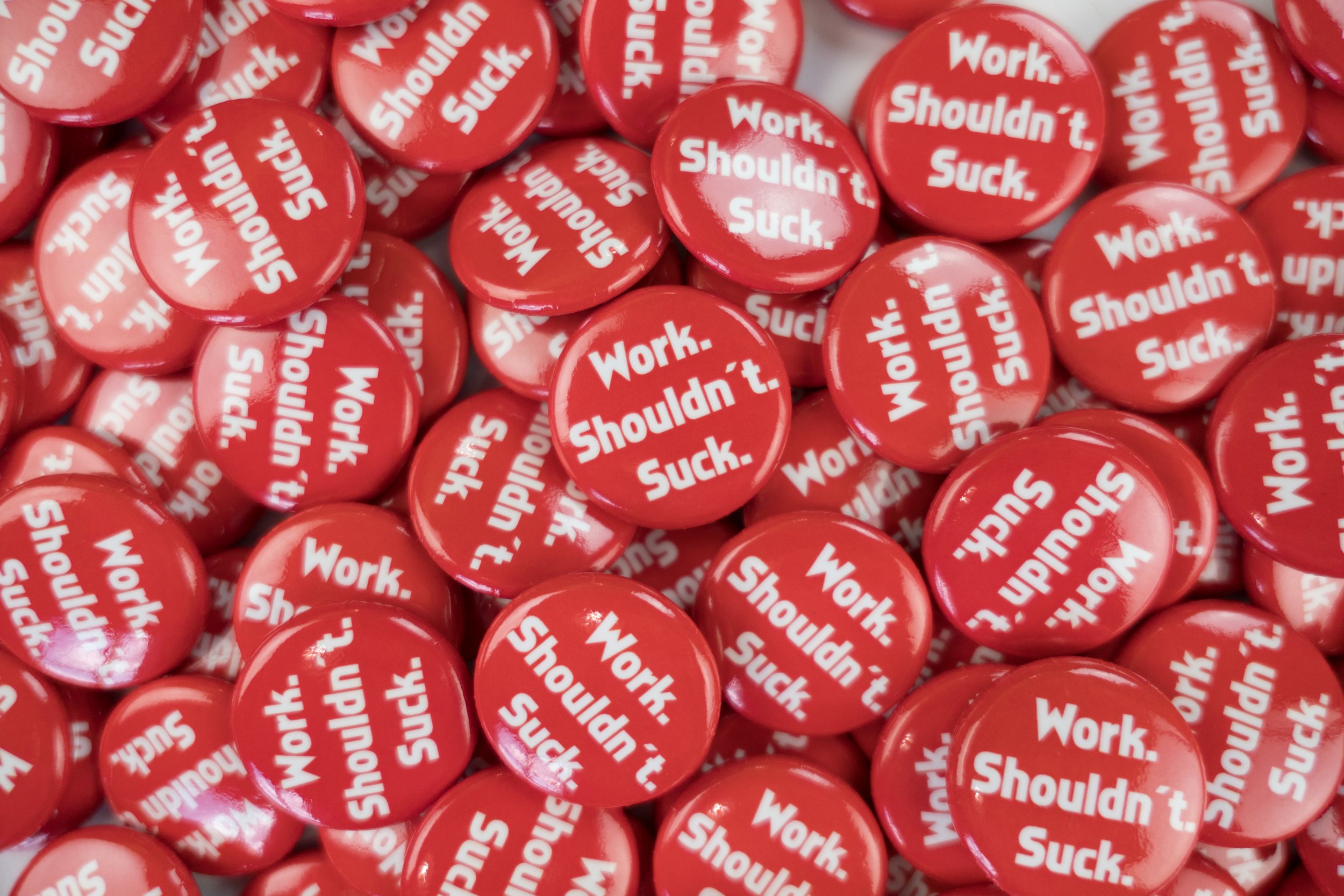
THE BLOG
Tim’s Top 20 Reads of 2015
By: Tim Cynova // Published: December 21, 2015
As you prepare to brave the roads, rails, and/or skies this holiday season, or just squirrel away under a pile of blankets, consider putting down the glowing screen and try some old school entertainment and enlightenment in the form of a book.
Here are a handful of memorable reads from my 2015 that have sparked interest in new ideas, rekindled affection for long-time hobbies, and provided superb content for cocktail party small talk. (No points docked for reading any of these on a glowing screen. Well, except for the scratch & sniff book.)

The Purpose Economy: How Your Desire for Impact, Personal Growth and Community Is Changing the World
Clan culture in the office environment can help companies accomplish a great deal, in addition to often providing employees with loads of coffee, a stocked beer fridge, and an enviable kinship with coworkers. Purpose culture is more elusive, and arguably more necessary if your organization has ambitions to change the world. If you want to level up your company culture in 2016, turn the pages of this tome written by Aaron Hurst, founder of the Taproot Foundation and CEO of Imperative.
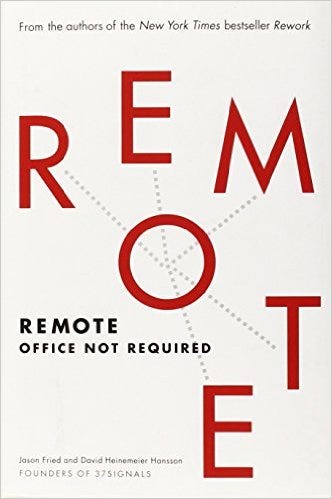
Remote: Office Not Required
The workplace of the 21st century is rapidly changing thanks in large part to technological advances, and an assist from recent research in organizational behavior. Nowadays most of us can do our work nearly anywhere there’s an Internet connection. These changes provoke questions and a large helping of anxiety and stress about what it means to manage staff when you can’t see them, or how to evaluate someone’s job performance when work falls outside of the normal 9-to-5. Written by the co-founders of 37signals, creator of the Basecamp project management software, Jason Fried and David Hannson set out to help us understand how our organizations can leverage this new-found flexibility, and offer tips to companies as well as remote workers for achieving success when miles, or coffee shops, apart.
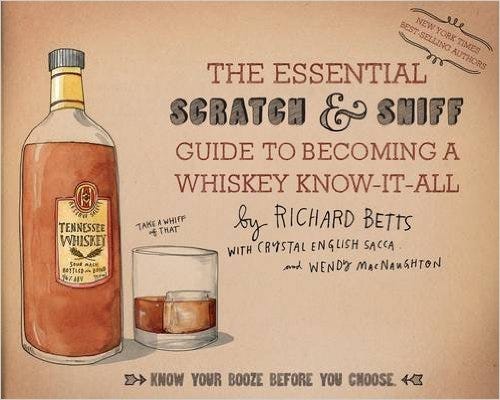
The Essential Scratch & Sniff Guide to Becoming a Whiskey Know-It-All: Know Your Booze Before You Choose
When someone serves you a glass of bourbon do you worry they’ll ask you what you think and all you’ll be able to muster is, “Looks brownish and smells alcohol-y”? Then you might benefit from and enjoy this new scratch and sniff whiskey guide. The book allows you to read with your nose as you hone your olfactory system to go boldly into that next brown spirits encounter. Wine more your speed, you say? There’s a version of the book for aspiring oenophiles too.

Radical Evolution: The Promise and Peril of Enhancing Our Minds, Our Bodies — and What It Means to Be Human
Have you been hearing about exponential technologies, the Singularity, or Moore’s Law recently and thought, huh? Even though this book dates to 2006, author Joel Garreau offers a great primer to these topics and how they might change the world. At times you’ll be inspired by the promise of humanity and then just as quickly scared to death by the ease at which autonomous nanobots could destroy the Earth. No longer the stuff of science fiction, the future is now. Read up. (h/t to Adam Huttler for recommending this read.)

Understanding Comics: The Invisible Art
There once was a time when you’d say “comic” to me and I’d immediately picture a single-frame Far Side cartoon. These days, I am more enlightened about comic art thanks to this in-depth exploration of longer form comics and graphic novels. Hat tip to my coworker, and comic artist himself, Jason Tseng who tipped me off to this “innovative comic book [that] provides a detailed look at the history, meaning, and art of comics and cartooning.” After finishing the book you might just find yourself reaching for artist brushes, sketch pads, and author Scott McCloud’s follow-up book, Making Comics: Storytelling Secrets of Comics, Manga and Graphic Novels.
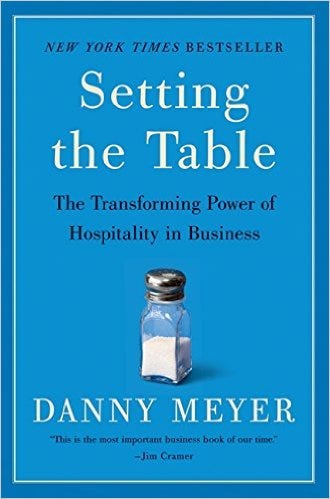
Setting the Table: The Transforming Power of Hospitality in Business
My friends in the restaurant industry tell me this is the playbook for how to deliver great service in the restaurant world. It’s written by Danny Meyer, the same guy behind the Shake Shack revolution that has so many of us standing in long lines for cheesy fries and custard shakes. If your business ever comes into contact with people, then Meyer’s read can help you hone that surprisingly rare competitive advantage — stellar service and a great experience for your patrons.
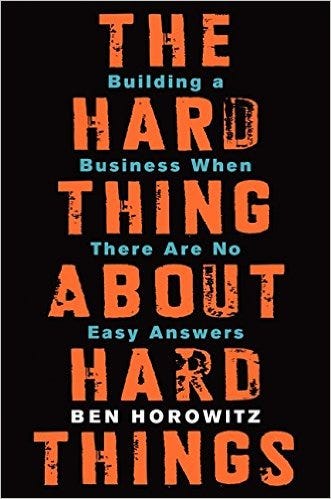
The Hard Thing About Hard Things: Building a Business When There Are No Easy Answers
Congratulations on the new company you just started or your recent promotion to manager! Here’s the book you need to read — STAT! — to fill in the gaps between theory and practice as the rubber meets the road in your professional life. Ben Horowitz’s advice often flies in the face of conventional wisdom to tell it like it is. Don’t reinvent the management wheel. The advice found in this quick read will save you alot of sleepless nights (or at least comfort you that you’re not the only one awake).
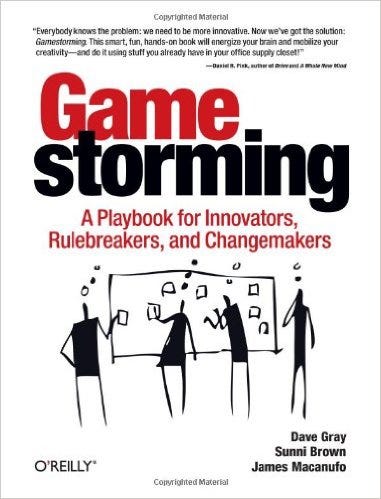
Gamestorming: A Playbook for Innovators, Rulebreakers, and Changemakers
Hey, let’s brainstorm! If you’re less than excited at the thought of standing with your coworkers writing things on the conference room whiteboard yet again, then check out Gamestorming. The authors provide 80 “games” to “help you break down barriers, communicate better, and generate new ideas, insights, and strategies.” The authors group the 80 games into Games for Opening, Games for Exploring, and Games for Closing to help you identify the best tools for the conversation you want to have. My personal favorite: The Pre-Mortem, or how is what we just committed to with so much excitement and promise going to end in a smoldering heap of crushed hopes and dreams? (My description, not the authors.)

Who
Are you new to interviewing job applicants? Want to be more certain that who you are about to hire has what it takes to fulfill the requirements of the position? Geoff Smart and Randy Street sketch out a step-by-step process that will help you go confidently from A to Z during the search process. They start by showing how you can create a scorecard to use so you don’t just pick someone who “feels right” and later find out you were wrong. They then walk you through how to source candidates, outline the four different interview types to help you learn more about candidates, and finally explain how to sell your prospective employee on the gig in order to seal the deal. Who will have you feeling more confident that the people you hire will be the people your organization needs to help it achieve its goals.

Scaling Up Excellence: Getting to More Without Settling for Less
How can companies quickly scale without losing what originally made them successful in the first place? Using a wealth of research and real-life case studies, authors and Stanford professors, Robert Sutton and Huggy Rao draw on rich material to “identify the key scaling challenges that confront every organization.” They go on to explain, among other things, how you can link “hot causes” to “cool solutions”, and discuss the trade-offs companies must make when using a “Buddhism” versus a “Catholicism” scaling approach. (That last one is their analogy referring to individualized approaches tailored to local needs or to replicate the same practices and customs as an organization or program expands.)
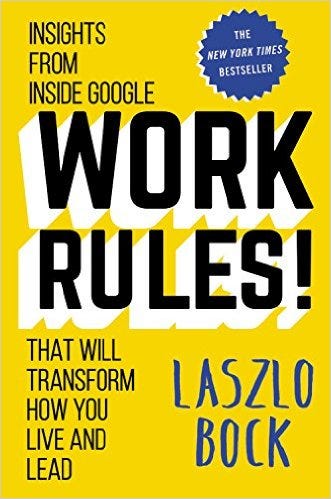
Work Rules!: Insights from Inside Google That Will Transform How You Live and Lead
What can 40,000 people, an innovative workplace, and a team of PhD statisticians offer companies around the world? Crack open this book by Google’s chief People person Laszlo Bock to find out. It’s so much more than just giving your people free food (although Mr. Bock explains what’s behind that famous perk). The book covers how to build a great company culture; rules for finding and hiring employees, for mass empowerment, for performance management, and rules for screwing up. A myriad of the experiments and research Google has undertaken fill the pages and bring the content to life.

Elon Musk: Tesla, SpaceX, and the Quest for a Fantastic Future
Elon Musk seems to be everywhere nowadays. Hyperloop? Musk. Sexy battery-powered cars? Musk. Colonize Mars / rescue a stranded Matt Damon? Musk. When I saw that there was a new biography written by Ashlee Vance — who was given exclusive access to Musk for this book — I quickly downloaded a copy to my Kindle (ok, full disclosure: the Kindle app on my iPad) and I devoured it. I came away with a pressing need to buy a Tesla and also with a fascination for how this guy, who’s by all account not very nice, can get his workers to work 100 hours a week by sketching out such a powerful singular purpose— to save humanity. See also in this list: The Purpose Economy. (Side note: since reading this biography I’ve been bugging my friends with this question, “Do you have to be an a$$hole leader of a company in order for it to change the world?”)

Fooling Houdini: Magicians, Mentalists, Math Geeks, and the Hidden Powers of the Mind
Uh, let’s just say I have a “friend” who even in his early 20s had a few magic tricks he’d show his friends. Nothing over the top, just a few card and coin tricks. Was he very good? Nope. So when I heard about this book by Alex Stone (a writer for The New York Times and Wall Street Journal) that begins at the Magic Olympics, I figured it was worth a closer look, you know, for this friend of mine. It’s a fascinating read that investigates “some of the lesser-known corners of psychology, neuroscience, physics, history, and even crime, all through the lens of trickery and illusion.” Mini-spoiler: In one study, Alex was able to remove a watch from a woman’s wrist — even while its alarm was going off — without her even noticing. It’s called brain blindness, and yes, it’s why you shouldn’t text and drive, or wear a watch around Alex Stone.

Moonwalking with Einstein: The Art and Science of Remembering Everything
Quick, what did you eat for breakfast yesterday? Don’t recall? I do, but that’s only because I eat the same thing every morning, a delicious bagel from Best Bagel on 35th Street. The second “experiential journalism” book on my list — if you already forgot, the previous book was about a journalist who did magic — is about the art and science of remembering everything. In a similar way to Alex Stone’s magic thesis, Joshua Foer dedicated a year of his life in order for him to remember what he ate for breakfast (my words, not his). Foer “draws on cutting-edge research, a surprising cultural history of remembering, and venerable tricks of the mentalist’s trade to transform our understanding of human memory.” Add this book to your Amazon queue before you forget.
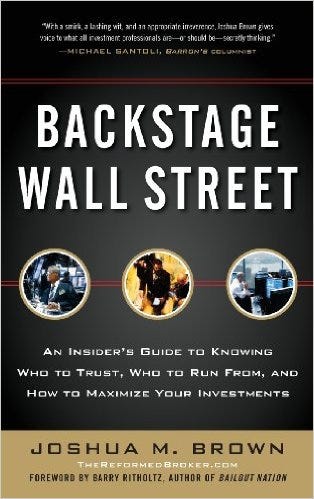
Backstage Wall Street: An Insider’s Guide to Knowing Who to Trust, Who to Run From, and How to Maximize Your Investments
Think this is another book about Wall Street? OK, yes, maybe I should have said think this is just another book about Wall Street. Joshua Brown, author of The Reformed Broker blog and CEO of Ritholtz Wealth Management, offers “clear and proven advice on how to navigate all the snares set by the lords of Wall Street.” Want to learn about how the person who set up your company’s 401(k) account years ago, and who you haven’t heard a peep from since, is still making money from you? Or how to minimize potentially hundreds of thousands of dollars over your lifetime paid to your 401(k) fund provider? And what the hell is an ETF? Crack open Josh’s book.
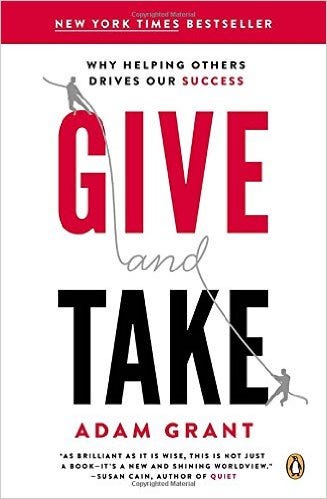
Give and Take: Why Helping Others Drives Our Success
I first learned about organizational psychologist Adam Grant’s work when chatting with my friend Amy Wrzesniewski, herself an organizational psychologist teaching and working out of Yale’s School of Management. Since that time, Adam is seemingly everywhere I look (granted I follow him on Twitter). In addition to his first book about how successful people connect with people, he’s co-authored a series of articles about women at work with Facebook COO Sheryl Sandberg for The New York Times, moderated this panel at Google about making work better, and authored another book about how non-conformists move the world. Fun fact: Adam was also a professional magician. So, if you ever have the pleasure of meeting him, you might want to keep an eye on your watch (See also: brain blindness and the above Fooling Houdini entry if that reference doesn’t make any sense).

Crucial Conversations: Tools for Talking When Stakes Are High
Difficult Conversations: How to Discuss What Matters Most
Fierce Conversations: Achieving Success at Work and in Life One Conversation at a Time
That’s right, you too can have challenging conversations in three exciting flavors — Crucial, Difficult, and Fierce! This past year, I set out to research various conversation frameworks that we could use at Fractured Atlas to provide all of us with the skills and shared vocabulary necessary to help alleviate the stress and lack of the “right words” when conversations turn from casual to crucial. As part of this process, I read the three books most frequently mentioned to help advance these skills— Crucial Conversations, Difficult Conversations, and Fierce Conversations (h/t Aaron Dworkin for putting Fierce on my radar.) Long story short (maybe there’s another blog post here), we ended up opting for the Crucial Conversations model. That said, I found helpful tips in all of the books. I also highly recommend this TED Talk by Susan Scott, author of Fierce Conversations.
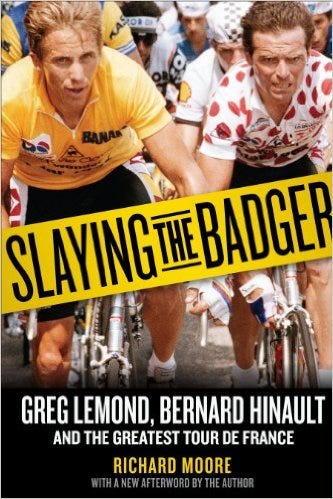
Slaying the Badger: Greg LeMond, Bernard Hinault, and the Greatest Tour de France
When I was as kid growing up in Indiana, I remember watching clips of the Tour de France on ABC’s Wide World of Sports. I can still remember my excitement in 1989 when Greg Lemond won the three-week-long race over Frenchman Laurent Fignon by 8 seconds (to this day still the smallest margin of victory ever in the race’s over 100-year history). Heartbreaking for Fignon and the French, glorious victory for LeMond and my young cycling Hoosier self raised on the cult cycling classic movie Breaking Away. Slaying the Badger focuses on a period a few years before the 1989 race as Lemond struggles to become the first American to win the Tour de France. If you like cycling, or are game for cautionary tales about what happens when two people on the same team are pitted against each other, where there’s betrayal on a grand scale, and it all plays out for a global audience, this book’s for you. (If you’re not, ESPN made a film about the story, and you can watch it on Netflix in under 90 minutes.)
Hope you enjoy these reads and here’s to a wonderful 2016 filled with many more!
Tim Cynova is a leader, HR consultant, and educator dedicated to co-creating anti-racist and anti-oppressive workplaces through using human-centered organizational design. He is a certified Senior Professional in HR, trained mediator, principal at Work. Shouldn’t. Suck., on faculty at New York’s The New School and Canada’s Banff Centre for Arts and Creativity, and for the past twelve years served as COO and then Co-CEO of the largest association of artists, creatives, and makers in the U.S.
Sans serif.
Photo by Niklas Bildhauer
By: Tim Cynova // Published: October 23, 2015
[Editor’s Note, 2021: This piece is in need of a serious update and some clarification with nearly seven years of hindsight. Stay tuned.]
Recently I estimated that with all of our hiring at Fractured Atlas more than 7,500 resumes have come across my desk since 2009. It’s certainly not Google or Facebook numbers by any stretch, but a significant number nonetheless.
Each time we post a position and receive 300+ applications in return, I make notes to myself about the things that hinder what might otherwise be outstanding candidates. It might be unfair, but these little things can consciously or unconsciously set you apart, or scuttle your shot. Don’t let these things — some of which are quite superficial — prevent you from landing your dream gig with a great organization.
Your application is being compared against other candidates who bring it, who write a bespoke cover letter, who polish their prose, who perfect their design. Don’t be left behind.
Just as great art poorly marketed can lose out to mediocre art splendidly marketed, so too can candidates who submit sub-par applications versus those who take the time to polish each aspect of theirs.
I’d like to share my notes here because I believe it benefits the entire cultural sector when organizations find the great people who can help them achieve amazing things.
So here they are, my tips for submitting a strong application:
Image by Sarah Semark
Sans serif. Dear God, please use a sans serif font for your materials. Using a serif font with all of its embellishments makes my eyes bleed after reading only a few sentences on the screen. Think about the person reviewing your application. They’re likely reading hundreds of competing applications. Make it easy for them to read the great stuff you wrote. Serif fonts do not make it easy. It’s like trudging through molasses. After only a few sentences I find myself skimming over the materials trying to glean the gist rather than taking in the substance of your argument.
Aesthetics and uniformity count. Use the same style and font throughout your application materials. You might be surprised by the number of applications that include a beautiful and cleanly designed resume attached to a cover letter that’s the equivalent of something scrawled on a cocktail napkin. Aesthetics count. Come on, we’re in the creative sector. By our very nature, we strive to make life more beautiful. Let that extend to your materials. Make your entire application packet match. Use the same fonts, colors, and overall design choices throughout, not just on the resume. Make it all something appealing to look at and read.
PDF It. At Fractured Atlas we ask for all of the application materials to be wrapped up in one PDF file and saved with the applicant’s name as the file name. Here’s what happens: We download all of the files to one folder and when the position search closes we go in and review them. If you don’t include it as a PDF, but say a Word file, your formatting goes out the window when opened on a machine other than yours, or one that doesn’t have the same fonts installed. Do yourself a favor and save your materials as a PDF so you’re certain that what we see is what you intended. Also, if you don’t save the filename with your name as the title but instead title it something like “Resume”, when it gets transferred to the folder with 300+ applications your application is literally lost in the shuffle. When we come to your name in the applicant tracker, your application is nowhere to be found. All of your hard work is in effect for naught.
Attention to detail. You can’t just say you possess great attention to detail while misspelling the company name, including a typo in the first sentence, and submitting materials in the wrong file format from what was requested. When the job calls for a stellar attention to detail, and your application materials include errors, how are we to believe that your actual work product won’t include similar errors as well? It’s like a Maslow’s Hierarchy of Needs. I imagine that you clearing the hurdle to get a job so that you have food and shelter ranks higher than a typical day in the office. If that’s true, your job application should be better crafted than most things you produce in the “wild.” We can’t have stellar attention to detail every time, but need to exhibit that we can at least have it for something we really care about as a baseline for demonstrating that we have those qualities to dedicate to our work.

Mad Libs cover letter. Look, we’ve all done it. It’s called boilerplate. We’re sending our application to a lot of organizations, are pressed for time, so rather than sit down and think, how can I express in writing to the company that I really get them, we write a letter that easily accommodates switching out the name of the company and some generic line about believing in their mission. We’re not fooling anyone. It’s easy to spot these letters. Mainly because most of the letter isn’t about the company, it’s about you. Take the time to craft a bespoke letter for each position you really want and skip the positions that don’t really interest you. Your effort here will yield better results in the long run. Related, don’t restate your resume in your cover letter. If you do this, you’re simply wasting valuable real estate that could be used to add more depth to you as an applicant.
Dot. Dash. Dot. The Morse Code cover letter. Here’s a trend I’ve been seeing recently. People submitting cover letters that consist of one micro paragraph followed by one loooooooonnngg paragraph, and closing with one micro paragraph. Long, large blocks of text lose your reader, particularly if they’re reading it on a screen. Make it easy and breezy to review your materials. Less is more. Open space on the page is attractive. Dense text blocks with 0.5" margins filled to the brim make people glaze over and skim. Every time I see one of these cover letters I’m reminded of a quote often attributed to Mark Twain, “I didn’t have time to write you a short letter, so I wrote you a long one.”
Distill, distill, distill until your cover letter is the equivalent of an incredibly delicious shot of fine espresso.
There’s no “I” in team, nor should there be at the start of each paragraph in your cover letter. Don’t start every sentence of your cover letter with “I” (or “My” for that matter). Starting each paragraph with “I” and/or “My” usually demonstrates that you lack a true understand of what we do at Fractured Atlas, who we serve, and how we serve them.
Business letter format. Use your application as a chance to show that you can correspond professionally. Do this by submitting your cover letter in proper business letter format. (Hint: The format includes the date, and the very first line on the page does not start “Tim,”)
Photo by Stéfan
These are not the droids you’re looking for. You might be surprised by how many people out of 300 start their cover letter by saying, “Great news, I’m who you’re looking for, you can stop your search!” Or that their ability to listen is better than anyone else’s. Or that their attention to detail is better than anyone else’s. Everyone is not in the top 99th percentile, and if you’re telling me that in a cover letter and not demonstrating it, you’re probably not in the 99th percentile. Demonstrate that you’re the person we’re looking for by writing a cover letter that conveys that you get Fractured Atlas and our members’ needs. Let us decide if you’re the person we’re looking for.
Plain English, please. Don’t be unnecessarily fancy in your language. Don’t say “utilized” when you can just as easily say “used”. This might be attractive at some companies, but at Fractured Atlas we spend a lot of our time trying to distill and explain complex and often confusing concepts as clearly as possible — tax law, the insurance industry — use plain, straight-forward, and easy-to-understand language.
Don’t include an objective on your resume. OK, I know there are a few different camps on this one, but I firmly land in the cynical your-objective-is-to-get-the-job-so-just-leave-it-off-of-your-materials-and-use-the-space-for-something-else camp. For many young people entering the workforce their objective should be to be exposed to as much as possible so they can refine where they want to go and what they want to be when they grow up.
A dash of arts. A professional resume for an administrative position should not include a lengthy list of your artistic activities. Again, this might vary by organization, but for us, we like to know that you have an artistic bent — for instance, every staff member at Fractured Atlas was an artist at some point in their life, and half of our staff are still practicing artists — but once that’s established we certainly don’t need to see your entire palmerès. Use that new-found space to include other things that are relevant to you excelling in the position and adding value to the organization.
Photo by Ryan McGuire
Time is not a proxy for expertise. When I read in application materials, “…for nearly one year,” or “3+ years…” or “over 20 years of experience,” the embedded assumption is that the longer you have spent doing something the better you are at doing it. Tell me how you demonstrated your expertise by what you delivered and how you achieved it. For all I know, if you say you’ve been doing something for 20+ years, that might just mean you’ve been doing something poorly for a very long time.
Bonus #1: Remove “References available upon request” if the references are requested. (See also “Attention to detail.”)
Bonus #2: Email isn’t broken. Here’s one I’ve used before when applying for jobs in an attempt to get a prospective employer to look at my materials. It’s the ol’ “Just want to make sure you received my email as I was having problems with Gmail / Outlook / my internet connection, etc.” We’re no longer submitting resumes by messenger pigeon. The email made it. It’s a less than sly way of following up with a prospective employer, especially one who says “No calls.” Let the process work. That said, if you have a friend or colleague in common with someone in the organization, now is the time to see if that person can put in a good word for you right after you’ve emailed your materials. Otherwise, sit tight. I can promise you that the employer hasn’t forgotten that they need to fill the position.
Searching for and securing a job is a full-time job. I’ve been there and know how exhausting and sometimes dispiriting the process can be, especially when you really want to work for an organization (I’m looking at you New-York Historical Society circa 2007). Keep the faith and keep your chin up. (If I had gotten the gig at NYHS, I wouldn’t now have the best job ever at an incredible organization with kick-ass coworkers doing amazing work.) Things have a way of working out in unexpected and awesome ways.
The tips above can help grease the skids so you see rewards for your hard work. Obviously the application is just one part of the process to get a job. It’s just to get you in the door for an interview so you can bring your application to life.
Don’t be dismayed if you don’t get an interview. Over the years we’ve interviewed people who haven’t been right for a position one time around and who get the exact position in a future search. Only some of it is you. The other part is the current team composition, the organization’s current programs and growth plans, and which candidate is going to build on both the team and organization at that point in time.
Good luck and Godspeed in your search, and please, dear God, use a sans serif font.
Tim Cynova is a leader, HR consultant, and educator dedicated to co-creating anti-racist and anti-oppressive workplaces through using human-centered organizational design. He is a certified Senior Professional in HR, trained mediator, principal at Work. Shouldn’t. Suck., on faculty at New York’s The New School and Canada’s Banff Centre for Arts and Creativity, and for the past twelve years served as COO and then Co-CEO of the largest association of artists, creatives, and makers in the U.S.
What Would Zappos Do?
By: Tim Cynova // Published: October 22, 2015
This past holiday season I found myself increasingly asking the question — WWZD? What Would Zappos Do?
Why is the venue usher being so unreasonable to that couple and ruining the concert for everyone? WWZD?
Why does it seem like that ticket agent is auditioning for the role of The Grinch? WWZD?
Why is that person yelling at customers to separate into multiple lines when there is no signage indicating that that’s what the store prefers? WWZD?
For years I have been somewhat of a Zappophile, if you will, studying the ways of this company that has come to represent the gold standard in customer service. Staying on the phone with a customer for eight hours to resolve her issues, and that’s not frowned upon? Zappos. Creating a workplace that’s fun and a little weird? Zappos. Delivering WOW while buying shoes? Zappos.
While I can only hypothesize WWZD in the above situations that I’ve experienced in recent weeks, earlier this Fall I had the great fortune to visit Zappos’s headquarters in Las Vegas to see firsthand WDZD — What Does Zappos Do. (Thank you to my gracious hosts: the Zappos Insights team and Zappos Coach Augusta Scott.)
Below are some of the most memorable moments from my visit to Zappos:
(1) Zapponians talk constantly about their ten core values.
I mean, constantly. And it’s not in the contrived way we see on The Office or in Office Space. This is in an everyone has them tattooed on their soul type of way.
Everyone is referencing and reinforcing the company’s values all. the. time. I’m not exaggerating when I say that. About half of what came out of people’s mouths during my stay was related to their core values in one way or another. It’s not in a generic, corporate way of “Remember Our Core Values” signs and banners, it’s more in a “Oh yeah, we did that because of core value number 3.” Everything is about how a decision was based on core value #1, or how someone is working on improving their performance on core value #5, or how you can use your voice to convey core value #8 while on the phone.
During their quarterly all hands meeting of the 1,600 staff they screened a scene from Divergent that their video team edited to make it about Zappos’s core values. That same meeting ended with a Zappos rock band and choir performing an original song about their core values as the audience of employees rocked out.
Imagine how your organization would be different if your core values were so ingrained in your people as to be second nature. Would decisions be made differently? Would your staffing decisions change? Would your programs and services reflect this?
(2) Everyone has exactly the same size desk.
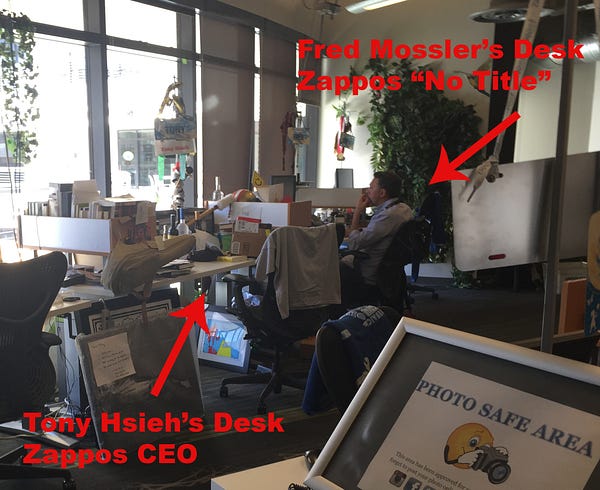
This one made a particular impression on me since we’re undergoing a renovation to make room for more desks in the Fractured Atlas office. In the Zappos office, every person has exactly the same size workstation in an open bullpen format — from CEO Tony Hsieh to the customer loyalty team member who started working yesterday. Same workstation. Need a little privacy? Move to one of the lounge spaces or check out one of the many small conference rooms around the building.
Tony explains in this article on Inc.com why Zappos designed its space to maximize serendipity and meaningful collisions.
Research shows that by breaking down the walls and putting your team in close proximity you set the table for greater collaboration and innovation. Maybe the new model we’ve been looking for in the arts is solved with desk size and working proximity?
(3) Holiday Helpers.
All Zappos employees go through the same four-week training program before transitioning into the job they were hired to perform. Call Zappos with a question and you might just speak with their new head of finance, or general counsel, as they complete the required customer service training too.
Think about it. You went through an exhaustive search to identify and hire your new Director of Development. You anxiously await her arrival and then you need to wait another month before she finishes her “core curriculum” training. That’s the cost of doing business when you want everyone in your organization to be able to deliver the same high level of customer service regardless of their position. (They also famously offer new hires $2,000 to leave after the second week to weed out those who aren’t a good fit for the organization.)
This early training is not simply a rite of passage, it’s laying the groundwork for their Holiday Helpers initiative. Not surprisingly, the holiday season is Zappos’s busiest time of the year. In addition to hiring temporary staff to help with the extra work, every staff member from CEO Tony Hsieh on down are required to spend 10 hours on the phones between Thanksgiving and New Year’s chipping in on the customer service front.
How would arts organizations operate differently if the Executive Director made a habit of working in the box office, showing guests to their seats for a performance, or serving coffee at the concession stand during half-time intermission?
(4) Quarterly all hands meetings are primarily about the “soft stuff.”
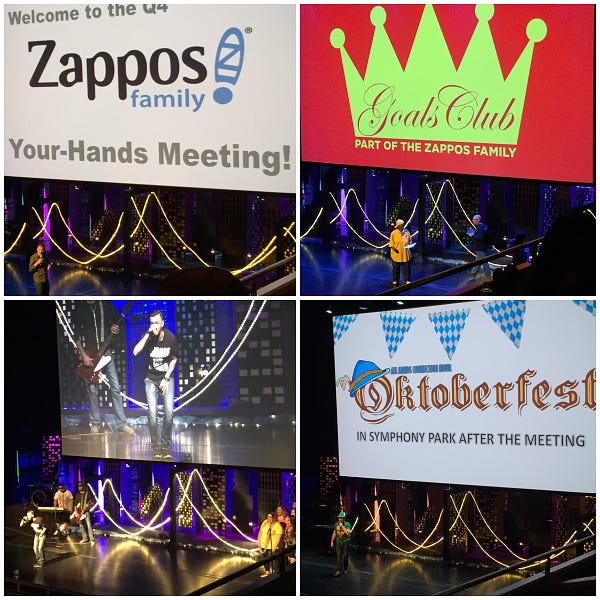
One of the highlights of my time at Zappos was being able to attend their quarterly all hands meeting. They held the meeting at The Smith Center (home of the Las Vegas Symphony), turned on their voicemail — seriously, if you tried calling Zappos during this meeting you would have heard a voicemail greeting saying no one was home — and all attended the 3+ hour meeting followed by an Oktoberfest happy hour (Zappos core value #3: Create Fun and A Little Weirdness).
These all hands meetings spend a huge amount of time on the “soft” stuff. Sure there was some talk about this policy change or that press announcement, but the better part of that meeting was spent talking about, and recognizing Zapponians for, their accomplishments. This included people who worked with coach Augusta Scott to complete the 30-day goals program, to their Movember Team, extreme athletes, and the Zappos choir.
During the all hands meeting, I wondered what would happen if a symphony orchestra secretly replaced their concert ushers with Zappos customer loyalty team members. Now, I’ve never attended a performance at The Smith Center, so for all I know the ushers are already on par with Zappos CLT members. However, I’m speaking in more generic terms about what if any hall secretly replaced its ushers for a performance (especially the place I visited recently where the ushers were not interested in delivering WOW through service (Zappos core value #1)). Would this noticeably change the arts-going experience? Make it more fun and entertaining?
(5) Geo-tagging and personal connections.
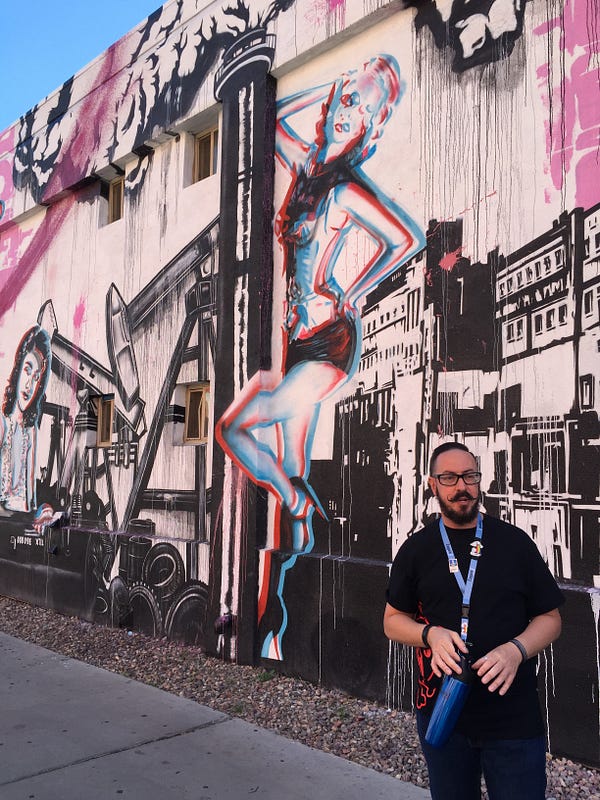
On our tour of the customer loyalty group bullpen, I learned how Zappos’s phone system routes customer calls to CLT members who have a higher probability that at some point they lived near the caller. This helps create the personal connections CLT members look to establish during their interaction. Our tour guide recalled fielding a call from a women who lived a block away from his childhood home. Think of the personal bond that that customer now feels with Zappos because of the personal interaction and vice versa.
How would the arts-going experience be different if instead of policing the audience, house staff tried to make two personal connections with audience members. “I love your scarf!” “You’re rocking a great pair of shoes!” “I’m so happy you’re joining us today, this performance is mind-blowing!” (It sure beats, here’s your program, there’s seat G15.)
(6) Lots of talk about holacracy.
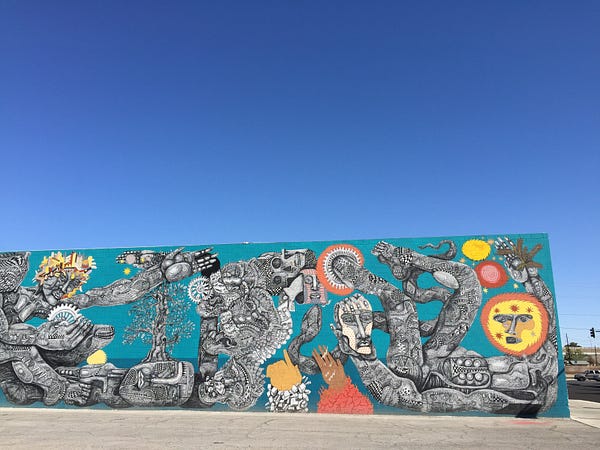
It’s huge, it’s messy, it’s confusing, it’s stressful, but it’s worth watching this experiment to see how it plays out when a successful, fast-growing company essentially throws all of the pieces up in the air and attempts to have them fall in a configuration free of traditional hierarchy and titles. This experiment is partly aimed at re-injecting the feeling they had in the early days of limitless innovation and entrepreneurship into what has grown to become a 1,600-person company.
While on the surface people put on a brave face, if you scratch just a bit I got the sense that there’s a great deal of anxiety associated with this change. I also got the sense that some people thought Zappos was undertaking this due to restless entrepreneurs at the helm. Either way, they’re doing it and we should watch closely to see what happens. (Zappos core value #2: Embrace and Drive Change; and #4: Be Adventurous, Creative, and Open-Minded)
Is your organization designed to be entrepreneurial and support a culture of innovation? Do you have a way for people to make small bets, some of which evolve into new programs and services?
(7) I never heard Zapponians say anything about Zappos selling shoes.
This was a bit of a shock to me, and I only realized it while riding the shuttle back to the airport. If I hadn’t known what Zappos did, I likely would have thought this company was a design firm or software company.
My sense is that they could choose to do any one of 1,000 things, and with their strong culture and commitment to stellar service they would still be successful.
What’s the cultural sector’s equivalent of not talking about shoes? Should we stop talking about art? What would we talk about instead? How might an arts organization reframe its collective purpose in such a way that the art itself is just a semi-arbitrary means to an end?
(8) Coach your people to success.
Recently, I saw this cartoon with two managers discussing investing in employee development. In it, the first manager says, “What if we train them and they leave us?” To which the second replied, “What if we don’t … and they stay?”
Zappos cares about developing its people. They show this in many ways, one of which is employing a full-time personal coach. Coach Augusta Scott works with a handful of Zapponians each month as they make progress towards achieving a variety of goals. Some people come to her wanting to buy a house, or passing the CPA exam, or losing weight (Augusta prefers to say you’re releasingweight because you often find those things you lose).
It’s not possible for most of our organizations to employ a personal coach. We can however do things that move things forward on this front. Maybe organize a monthly wellness challenge? (Post a tote board in the office this February to count the number of times people walk up the stairs.) Maybe a monthly book club of people trying to accomplish a specific goal? (I recommend reading Get Off Your But by Sean Stephenson, The Happiness Project by Gretchen Rubin, or the newly published Game Plan by my friend Ciara Pressler to kick off 2015 and support your New Year’s resolutions.)
(9) Zappos really is a special place.

Every single person I met during my time at Zappos was kind and friendly and helpful, and was positive about their coworkers and the organization. (Zappos core value #7: Build a Positive Team and Family Spirit.)
I can hear readers saying, this is all well and good, but it’s Zappos. They have tons of money to do things like this. How am I supposed to do any of this with a nonprofit budget? I hear you, but read Tony Hseih’s Delivering Happiness to learn about how Zappos nearly went out of business several times before they became the Zappos we know today. A culture of innovation and excellence with strong core values doesn’t emerge fully formed overnight.
Zappos found the secret, and I think the WWZD frame is a helpful one to apply when thinking about better ways of accomplishing something that doesn’t quite seem to work — What Would Zappos Do?
Tim Cynova is a leader, HR consultant, and educator dedicated to co-creating anti-racist and anti-oppressive workplaces through using human-centered organizational design. He is a certified Senior Professional in HR, trained mediator, principal at Work. Shouldn’t. Suck., on faculty at New York’s The New School and Canada’s Banff Centre for Arts and Creativity, and for the past twelve years served as COO and then Co-CEO of the largest association of artists, creatives, and makers in the U.S.


